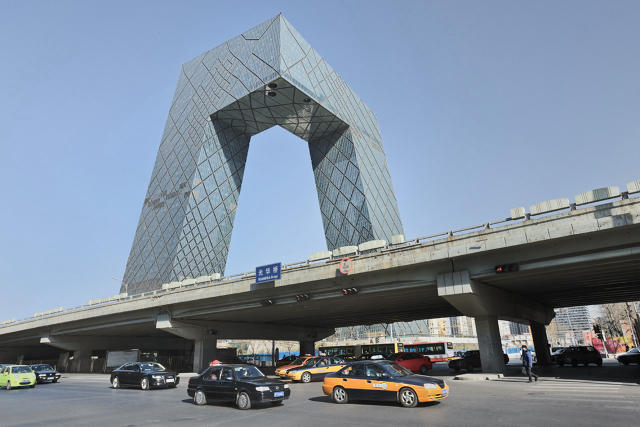5 Trends Shaping The Future Of Architecture
Architects from 2015’s most innovative companies look into their crystal balls and divine the ways the built environment will evolve.
What does the future of the architecture industry hold? We asked experts from some of the world’s most innovative companies to look into their crystal balls and divine the ways that the built environment will evolve over the next five years. Largely optimistic, these trends indicate a rosy future for the structures that surround us every day. Architects predict that these buildings won’t be as flashy, but they’ll be far more useful on an everyday basis— (the starchitect-designed roof leak is so last century). And they may be built of a material you haven’t even heard of yet.
Here are some of the ways that architects expect the field will change in the near future:

Starchitecture will dim.
Steve McConnell, managing partner at NBBJ, says architectural design is moving from paying “a lot of attention to the artifact—the physical thing—to a greater emphasis of the opportunity represented when people gather.” He describes this way of working with clients as “almost in a realm of strategic partnering with businesses.”
For instance, for the firm’s Tencent campus, where the client wanted to encourage spontaneous run-ins between employees, NBBJ mapped the pathways that would be taken throughout the building by thousands of employees, designing the building to maximize intersections between those paths.
Julian Weyer, partner at the Denmark-based C.F. Møller Architects, agrees that clients are more interested in the thinking behind design, rather than just chasing after starchitecture. “There’s a counter trend which focuses more on meaning,” he explains. “Why do we even construct anything? That can be more fruitful—what do we actually need, rather than who’s going to design it.”

Architecture will be more collaborative.
As clients become more interested in thinking outside the physical box of the building, architects will need to collaborate with more experts from different fields—like NBBJ’s in-house brain scientist. “We are already seeing today broad design teams that include social anthropologists and environmental scientists who are creating nurturing, sustainable and meaningful environments,” says Jay Brotman of Svigals + Partners, a New Haven, Connecticut-based firm. “In the future we will see policy makers joining these teams which will [create] a more holistic perspective of the built environment and effect broader change.”
The divide between public and private space will melt away.
“Going beyond the client perspective, there’s also always a responsibility to the public as well,” says C.F. Møller’s Julian Weyer. In constructing a Swedish high-rise apartment building, the firm explored how different functions of the building might be expanded to benefit not just its residents, but the city as a whole. They decided to make some spaces open to the public within the building, like a recycling facility. “Can we invite the public domain? That sort of thing is all part of that analysis,” he says.

Chinese architecture will be more subtle.
Known for some of the tallest and most unusual-looking architecture in the world, China has proven to be a fertile market for architecture in recent years. ” You could build almost anything, and it would be commercially viable,” Steve McConnell of NBBJ says. Now, he sees the market trending toward more sophisticated design as the country urbanizes and the real estate industry gets stronger.

“We’re seeing another wave of market maturity that’s going to see more mature design work and understanding of [a building’s] performance,” he says. He sees comments by Chinese leadership, such as the president’s recent tirade against “weird architecture” like the Rem Koolhaas-designed CCTV headquarters) as a sign that going forward, Chinese projects will face greater scrutiny over their utility, rather than their flashy looks.
You might work in a tower made of wood—or mud.

C.F. Møller is currently at work on one of the world’s tallest timber skyscrapers. The newfound availability of cross-laminated timber panels, engineered to be stronger and more fire-resistant than traditional wood, has allowed architects to build taller and taller with timber. But wood probably isn’t the only ancient building material we will rethink in the next few years, Weyer predicts.
“There are new methods constantly being tested,” he says, like rammed earth, an ancient technique (using a dirt mixture) that is still used to build houses in places like Australia, South Africa, and the southwest United States. “Technological advances in wood/timber construction have made it possible for us to re-image some well-known building types,” he explains. “I would expect that other technologies will have a similar impact in the near future.”
Fast Company , Read Full Story
(124)











